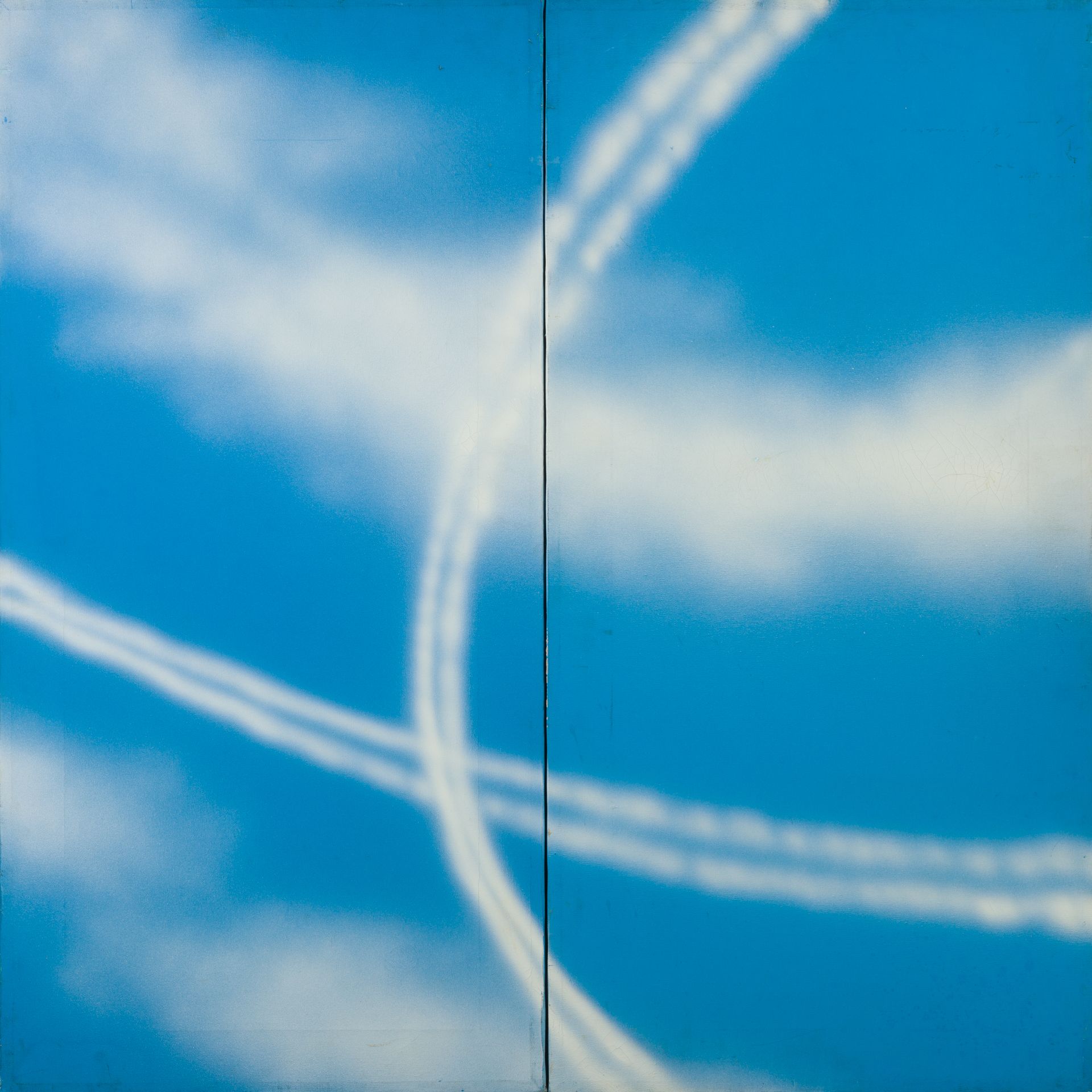
Carena's skies are a working method. In other words, Carena creates skies, he neither paints nor constructs them. Or, if you prefer, they are the result of a combination of operations that act on each other, combine choices, analyse possibilities and barred paths and the result is, objectively, the method.
Meanwhile these skies are a visual motif. In other words, they arise from a double level of visual observation: in the first place, they are real skies and then skies-crypts with an automatic contiguity, a symbol of the ability to pretend skies with a bet of a persuasive result, of knowing how to paint them by convincing the spectator of an effective presence. But these skies are not nature: the light blue, the clouds, the passage of lights have been already materialised on cars, of which they keep, as soon as they are seen, even the functional change of the metal sheet that becomes a car door, the side of a car. The observation incorporates with the sky the object of its contingency: on the other hand, Carena, who patiently applies his craft to make this observation on the metal surface that will become a plausible “car+skies”, breaks the object-painting in two, craft plus fiction, in which the craft with its handicraft serves to materialise the laziness of the viewer of a situation (“the sky”) that neither the operation of making the object, nor the illusory result in itself contains. In other words, the fact that Carena’s observations necessarily (automatically) become precise operations, paralyses and destroys a process of psychological concealment of reality, forcing it to become an objective datum, to be handled and used without any further allusiveness and illusion.
These skies are objects in their totality and presence. Because this industrial sky, in which every step of the production process is a continuous analysis of the possibilities that the various moments have to be exploited for a certain aim, is treated, constructed, realised with the most patient and artisanal affirmation of the craft. With the consequence of discovering the contradictions, tricks and timing that the craft, as the norm of an expectation of absoluteness, entails: first and foremost, a precise calculation of the psychological possibilities of a canvas to be “sky”. By explicitly declaring that these skies are an object, Carena inverts the sense of the surrealist “surprise”: the beyond of reality is not the unknown and nocturnal world of a rejected reversal, but the real and known world of a concealment to which the fiction of painting has offered its services. And it is precisely these services that Carena rejects; it is from them that he purifies his “skies” when he makes them into mere objects. Instead of dealing with the spectator head-on, the surprise acts on the object, forcing it to reveal itself and to unveil itself for what it actually is.
This is more evident in his last works, in which the ability to bring together the craft of the construction and the perfection of the result achieves excellent results, with the use of new plastic resin techniques. You do not know whether to attribute the sense of physical health evoked by the perfectly successful object to a wise boxing of the air in these skies, or to a confident abandonment to the clear world of a successful technique: on the contrary, here the object promotes such a lively exchange between one thing and the other, and so well forces the first sensation to invoke the second and vice versa, as to unveil in all its subtle critical intelligence the sense of such a work.
This uncoiling of a certain automatism of expectations and responses (visual sensation - pictorial fiction) and translating it into a series of systems of relations and constructions of different breadth and depth, is precisely Carena's method. Since his “skies” are a calculated set of operative solutions and of the will to know and implement that cannot be reduced to a single horizon, to a single illusion: on the contrary, they know differentiated and irreducible dimensions, forms and needs; what does acting ever mean if not this welcoming of the different motivations in their variety in order to use them, noting the reality and possibility, form and impotence of each? This is why Carena creates the skies: not the means of symbols or emblems or particular initiations, but each the object, the meaning of a series of decisions acted upon with a critical, functional method. Nature, the skies, are not figures in a myth: they are the functionality of a way of being, of posing, of acting.
Paolo Fossati, Presentation in the catalogue, Galleria 11 Punto, Turin, January 1968